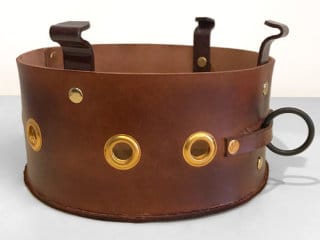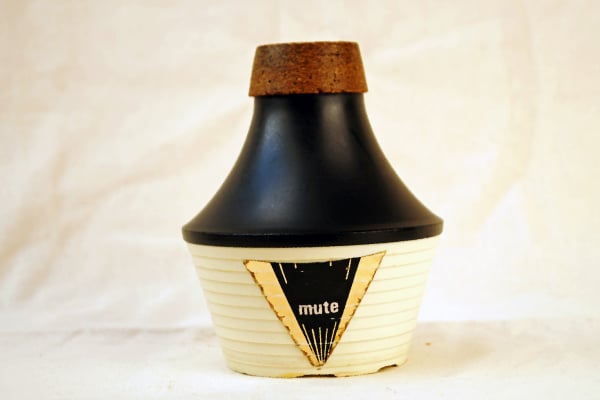Warming up is important when playing the trumpet – or any instrument. Here are a few suggested warm-ups for varying levels of specialization.
Why Warm Up
Before we delve into the topic of trumpet warm-ups, it is important to understand the importance of warm-up routines before playing brass instruments.
Warm-ups are generally important as these sessions prepare our minds and body for the main task. In trumpet playing, we warm-up to ease the facial muscles and increase blood flow to avoid issues such as muscle damage or contraction. It also helps with better breath control, thus ensuring a vibrant tone.
Warming-up also mitigates the production of airy sounds. It is of utmost importance that all trumpet players, and by extension, brass instrumentalists, warm-up before the main performance.
Trumpet Warm-up sheet music
The warm-up sheet music is made up of scores to improve tone and breathe control. It is also very efficient for endurance and high note playing.
For the interested trumpeter, many useful books are available, but some warm-ups are also available online to get you started. Trumpet warm-up sheet music is available in many books, but you depending on the difficulty of the piece.
Looking For A Comprehensive Warm-Up Book?
If you’re looking for a solid book to follow for your warm-ups, these might be just what you need:
Warm-ups & Studies for Trumpet* by James Stamp
Clinical Notes on Trumpet Playing* by Roger Ingram
Pick those up and carry them with you at all times!
For beginners, it is especially wise to begin with simpler pieces. By finishing these pieces, you get encouraged to try more difficult warm-up sheets, and the process guarantees massive improvements.
This trumpet warm-up sheet music (PDF) by Ken Saul exemplifies the progression of a beginner.
Easy trumpet warm-ups for beginners
Trumpet warm-ups are especially integral to the progress of beginners as they train chin muscles and ensure more fluid tonguing techniques
Flapping lips
This exercise is done for 1-2 minutes with 1-minute breaks at intervals.
It helps to increase the flow of blood in the lips and loosen the embouchure muscles. It also helps to regulate your breathing since a lot of air is taken in during this exercise.
Lip flapping requires flapping your lips. Think about a time when you played with your toy locomotive train and the almost buzzing sound you made by flapping your lips in quick successions.

Long Tones
Playing long tones can be especially helpful since this exercises the lungs and posture of the trumpet player.
Most trumpet players often pay little attention to posture while playing, however, if a trumpeter must be able to play long notes, then they must sit or stand upright, and hold the trumpet in a 45 degrees position towards the ground.
Long tones often aid better tone production as is the case with trumpeters who may intend to delve into the challenging world of classical trumpet music.
Playing notes on rhythm
One aspect of playing the trumpet has to do with making a pleasant sound, the other has to do with following the rhythm of the music. This is especially important for trumpet players who intend to play in an ensemble.
To effectively practice playing notes on rhythm, simply download a metronome app and try to play based on the set rhythm.
Do not limit this practice to slow rhythms, set rhythms in allegro, moderato, and, most importantly, staccatos. This will solidify your fingering movements and your embouchure as you progress.
Looking for a teacher?
Want to get lessons at the comfort of your own home? Check out the course Learn to Play the Trumpet: Beginner to Pro Made the Easy Way* on Udemy! (See their full trumpet course line-up here*!)
Trumpet warm-ups for high notes
Playing notes in the upper register remains the most challenging aspect of trumpet playing for most players. This is often attributed to natural human instincts, which suggest playing louder to hit higher notes. However, nothing could be farther from the truth.
To effectively play notes in the upper register, a trumpeter must master playing in hushed tones. Here are some trumpet exercises to aid with this.
1. Play quietly
Start by playing quietly. This helps to control the pitch and not force it. High notes can and should be played quietly as opposed to popular belief. What matters is a sustained pitch devoid of a shaking or wavering tone.
2. Implement vibrato
Implement vibrato into your trumpet playing. Note that too much vibrato isn’t exactly a good thing. It should show towards the end of a note, not all through the note.
Also, when notes are jumbled up, the very last note should be played in vibrato. It is important to keep an eye for breathing opportunities and utilize them effectively as vibrato often takes more air to implement.
Finally, ensure that the vibrations emanate from your tummy, and not your lips.
3. Produce good tone quality
While warming up, try to create a good tone quality in the lower register. This will enable you to progress easily to a higher note. This can be actualized by practicing long trumpet tones in the middle and low trumpet range.
This process ensures the trumpet player pays attention to the tone’s quality and how consistent the air is; this way, higher notes can be played with relative ease.
4. Work on transitions
The next step is to learn how to transition comfortably to different parts of the register. You can do this by trying out notes in the mid-range. This will often improve your tone quality and breathe control.
5. Play along
Practice with a melody you are used to. You naturally can play higher notes in the melody since your brain is already acquainted with the melody. Weird? Yet it works.
Jazz trumpet warm-ups
Jazz music requires a special type of skill owing to sudden irregular beats and note variations. It takes a truly good trumpeter to meet the requirements of a typical jazz piece.
Perhaps, if you use these jazz trumpet warm-ups, you may improve your jazz abilities actively.
1. Work on your scales
Practice your scales like your life depends on it. The scales truly have to become a part of you. It’s the hallmark of all successful jazz trumpet players.
2. Practice staccatos
Staccatos are short, pronounced notes jumbled up into one piece. By practicing staccatos often, your embouchure becomes much more flexible to accommodate the sudden swings of jazz trumpet music.
3. Mix it up a little
Mix up the notes on the scales: Playing from lower octave to the higher octave is like learning to drive on a straight road without traffic, anyone can do that. The real challenge is trying to play a host of notes ranging from multiple octaves, minor and major notes as well.
Trumpet buzzing warm-ups
Trumpet buzzing warm-ups will help your embouchure tremendously. It is paramount for all trumpeters, especially beginners, to engage in trumpet buzzing exercises.
It is important to note that trumpet buzzing is entirely different from lip flapping. In trumpet buzzing, all you have to do is blow air through the mouthpiece with varying degrees of force and lip technique.
What this does is give the trumpet player an exceptional idea of just how important the embouchure and breath control is towards projecting a sonorous tone.
To buzz, simply detach the mouthpiece from your trumpet and blow without taking the mouthpiece off your lips. While buzzing, breathe only through your nose.
Get a steady piece within the key Bb, and play the notes as you would a trumpet.
Practice varying types of music and different tempos, too.
Trumpet mouthpiece warm-ups
Mouthpiece buzzing can be used for warm-up exercises in preparation for the main performance. The lip movements help to loosen chin muscles.
Trumpet buzzing is a typical example of trumpet mouthpiece warm-ups.
You can also sustain long notes while buzzing into your mouthpiece, as stated earlier. Play through the scales and later include accidentals slowly.
Note that once the mouthpiece is mastered, the trumpet is mastered.
Daily warm-ups for trumpets
Here are daily trumpet warm-up practices you can try every day to improve your playing.
- Practice breathing exercises (without the trumpet)
- Do some cardio (A fit body often sustains notes for much longer periods!)
- Clean your instrument thoroughly
- Practice trumpet buzzing
- Listen to a song, and try to play based on what you have heard. (This singular skill once acquired can really make you stand out!)
- Run your scales on different keys in different variations.
- Run your scales as many times as possible in one breath (while standing)
- Try running around for a while and trying to play your trumpet before you catch your breath. (This is especially helpful if you get nervous in front of audiences.)
Conclusion
Playing the trumpet is a rather complex skill. Therefore, it requires patience and consistent practice to master. It is necessary to warm up as consistently as possible.
Understand that with trumpets, it isn’t about how long you practice but how frequently.
By practicing for just 10 minutes every day, you are most likely better off than someone who practices for two hours, twice every week.
By engaging in trumpet warm-ups, we also gain more knowledge and mastery of a particular note or registry, thus improving our playing ability.
It is very important to prepare before a performance mentally. Warm-ups help stimulate mental knowledge of the instrument, ensuring that your brain already knows what to do.
It is also very important to pay attention during warm-ups as this will help you identify problems from the onset and solve them before the main performance.
Just like how we warm up for exercises before proceeding to engage in the main exercises, it is important to warm-up before playing the trumpet.
Table could not be displayed.TrumpetHub.com is a participant of the Amazon Services LLC Associates Program, an affiliate advertising program. Links marked with an asterisk (*) are affiliate links. If you buy a product through an affiliate link, we will get a small commission without extra cost to you. This helps us earn an income off the free content we provide to you. Thank you for your support!
Featire image by Walter Bichler from Pixabay







